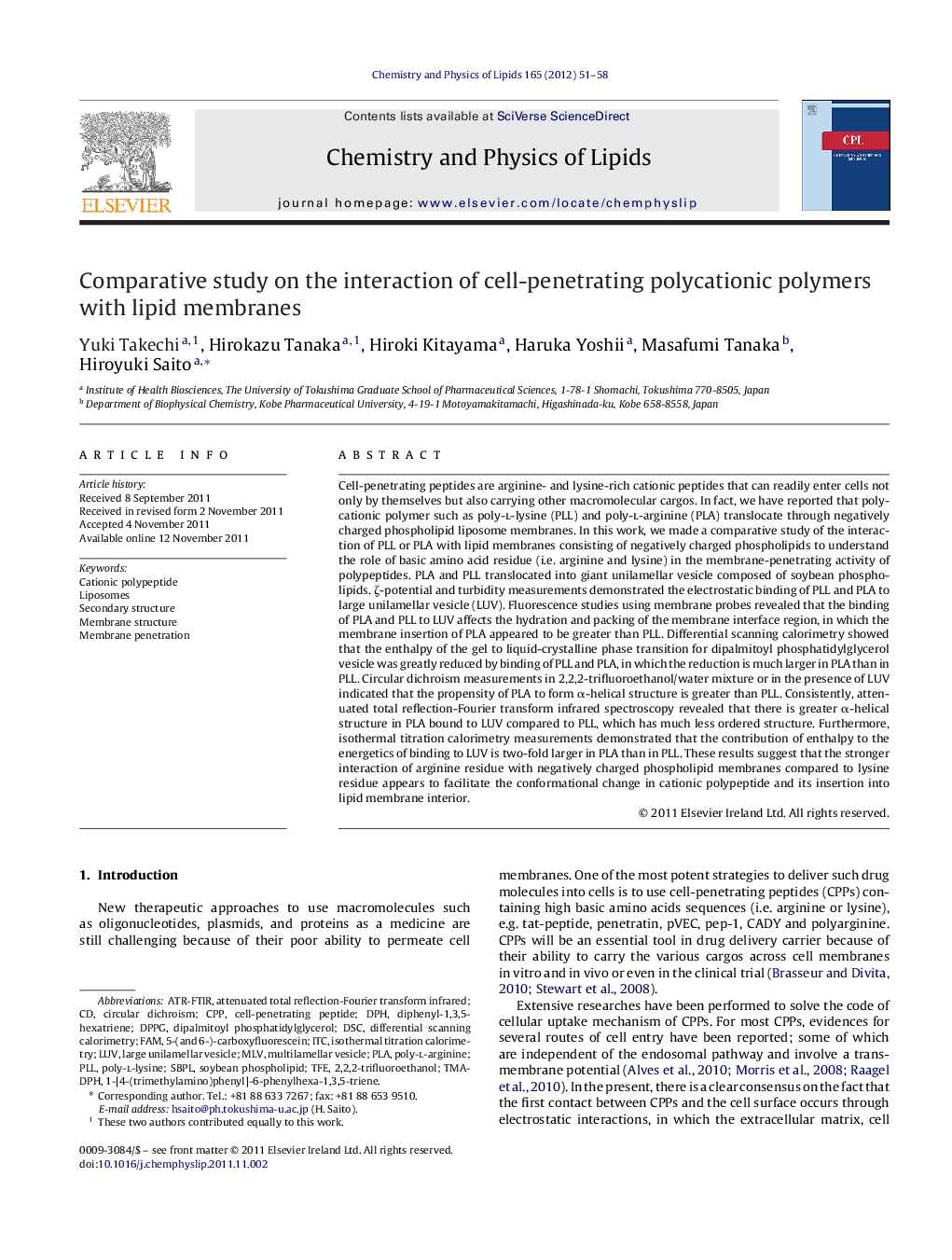| Article ID | Journal | Published Year | Pages | File Type |
|---|---|---|---|---|
| 1252005 | Chemistry and Physics of Lipids | 2012 | 8 Pages |
Cell-penetrating peptides are arginine- and lysine-rich cationic peptides that can readily enter cells not only by themselves but also carrying other macromolecular cargos. In fact, we have reported that polycationic polymer such as poly-l-lysine (PLL) and poly-l-arginine (PLA) translocate through negatively charged phospholipid liposome membranes. In this work, we made a comparative study of the interaction of PLL or PLA with lipid membranes consisting of negatively charged phospholipids to understand the role of basic amino acid residue (i.e. arginine and lysine) in the membrane-penetrating activity of polypeptides. PLA and PLL translocated into giant unilamellar vesicle composed of soybean phospholipids. ζ-potential and turbidity measurements demonstrated the electrostatic binding of PLL and PLA to large unilamellar vesicle (LUV). Fluorescence studies using membrane probes revealed that the binding of PLA and PLL to LUV affects the hydration and packing of the membrane interface region, in which the membrane insertion of PLA appeared to be greater than PLL. Differential scanning calorimetry showed that the enthalpy of the gel to liquid-crystalline phase transition for dipalmitoyl phosphatidylglycerol vesicle was greatly reduced by binding of PLL and PLA, in which the reduction is much larger in PLA than in PLL. Circular dichroism measurements in 2,2,2-trifluoroethanol/water mixture or in the presence of LUV indicated that the propensity of PLA to form α-helical structure is greater than PLL. Consistently, attenuated total reflection-Fourier transform infrared spectroscopy revealed that there is greater α-helical structure in PLA bound to LUV compared to PLL, which has much less ordered structure. Furthermore, isothermal titration calorimetry measurements demonstrated that the contribution of enthalpy to the energetics of binding to LUV is two-fold larger in PLA than in PLL. These results suggest that the stronger interaction of arginine residue with negatively charged phospholipid membranes compared to lysine residue appears to facilitate the conformational change in cationic polypeptide and its insertion into lipid membrane interior.
► Polyarginine and polylysine electrostatically interact with anionic lipid membranes. ► Both polypeptides translocate through giant vesicles. ► Polyarginine interacts more strongly with membrane interface region than polylysine. ► Contribution of enthalpy to lipid binding is two-fold larger in polyarginine. ► Hydrophobic interaction is important in polyarginine–lipid interactions.
